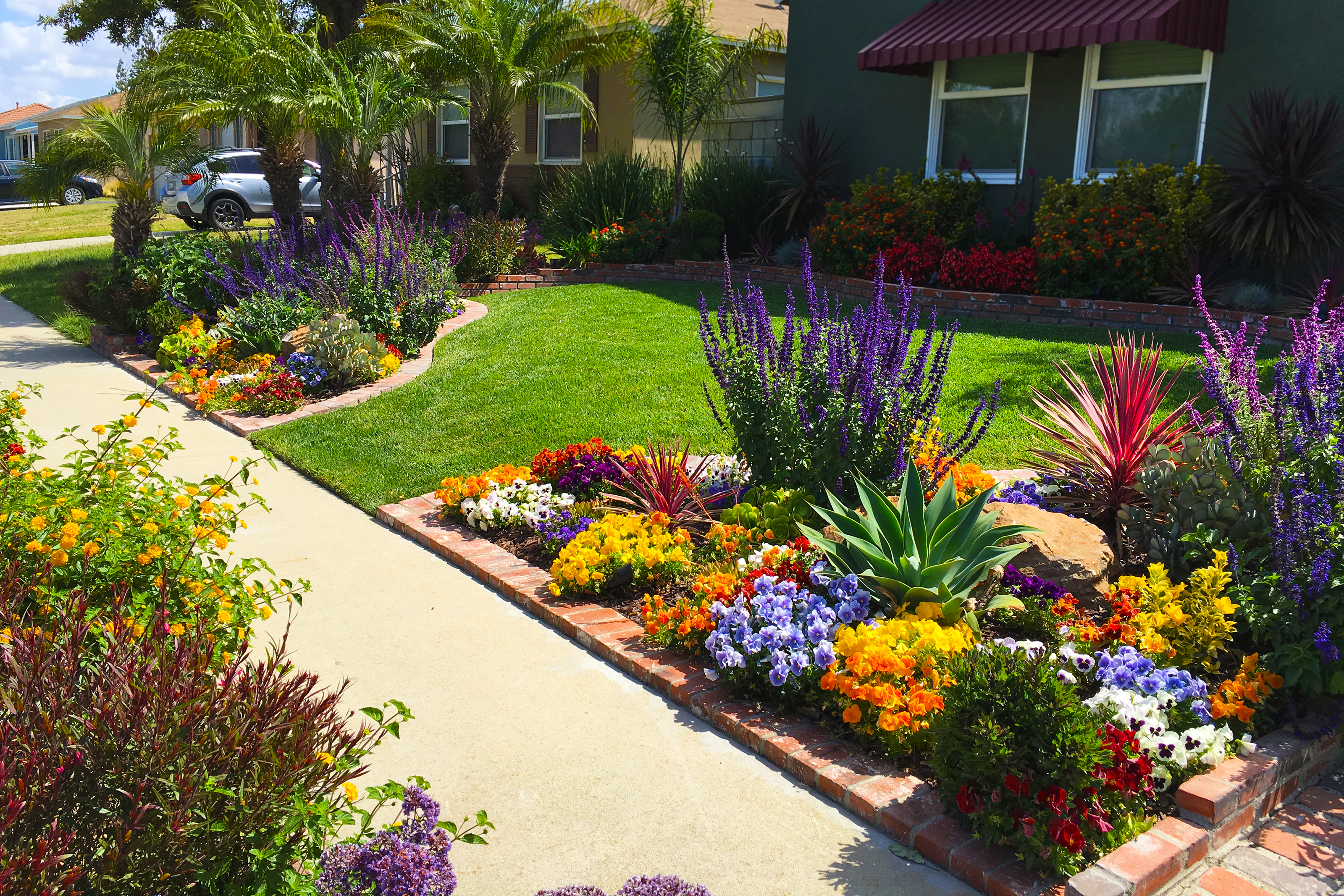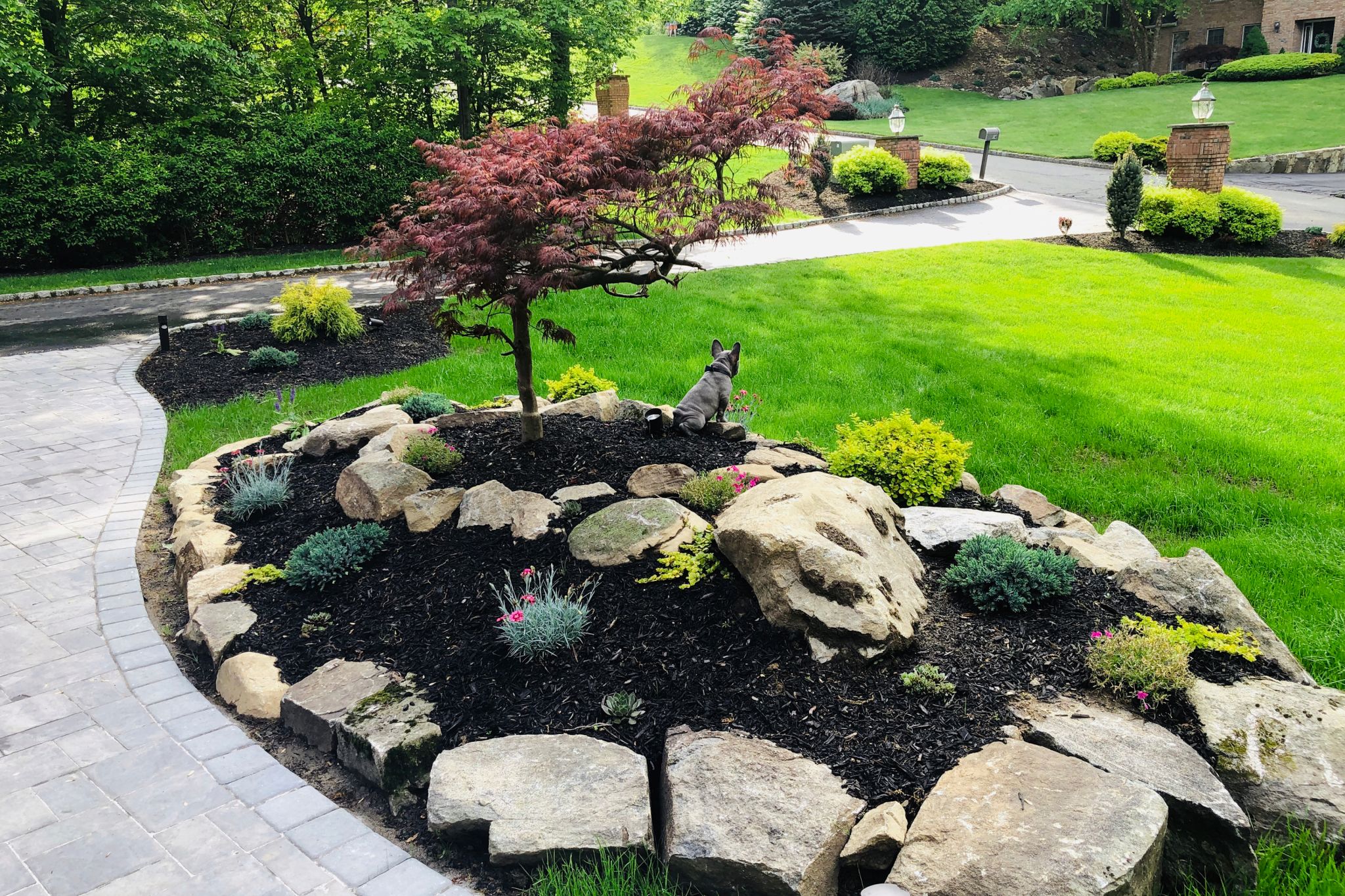Combining Retaining Wall Installation with Landscape Lighting for Maximum Impact
Wiki Article
Exploring Various Kinds of Landscaping to Enhance Your Outdoor Setting
Landscape design plays a crucial duty in defining outside spaces. Different styles, from standard gardens to modern minimalist designs, provide distinct benefits for improving aesthetics and function. Incorporating aspects like xeriscaping and native plants can add to environmental equilibrium. Comprehending the interplay of hardscape and softscape is essential for producing welcoming settings. The selections readily available can be overwhelming, motivating one to assess which style best straightens with their vision for an outside refuge.Typical Garden Landscape Design

While lots of modern-day gardens accept minimalism and native plantings, traditional yard landscape design stays a cherished method that emphasizes proportion, framework, and decorative attributes. This design frequently incorporates official geometric designs, where flowerbeds, paths, and bushes are arranged with accuracy. Central focal factors, such as water fountains or sculptures, attract the eye and offer a feeling of harmony.Traditional landscaping frequently consists of a variety of plant types, showcasing seasonal blossoms and evergreen aspects. Timeless bushes, perennials, and annuals produce dynamic shades and textures throughout the year. Additionally, arcs, pergolas, and trellises include vertical interest and function as support for climbing plants, improving the overall aesthetic.The use all-natural materials, such as stone and timber, additional improves the typical landscape, adding to a classic quality. Ultimately, this style welcomes relaxation and enjoyment, making it a beloved selection for those looking for an attractive exterior atmosphere.
Modern Minimalist Landscaping
Modern minimalist landscape design emphasizes simpleness and capability, defined by tidy lines and open rooms. Trick qualities include a limited plant combination and thoughtful hardscape design that prioritizes usability and visual appeal. Efficient plant selection methods even more improve the minimalist method, producing peaceful outdoor settings that urge leisure and reflection.Trick Attributes of Minimalism
A growing pattern in landscaping is the embrace of minimalism, defined by simpleness and capability. Minimal landscaping concentrates on clean lines, open rooms, and a restricted shade scheme, advertising a sense of tranquility. Components are carefully curated to avoid clutter, enabling each part to stand out. The usage of natural products, such as rock and wood, boosts the organic feel while preserving an aesthetic equilibrium. Furthermore, minimal designs frequently incorporate geometric forms, which can develop aesthetic passion without frustrating the senses. Water functions may be included, functioning as focal points that improve calmness. Generally, minimalism in landscape design highlights the elegance of restriction, enabling nature's fundamental high qualities to shine through in an unified exterior atmosphere.Plant Option Techniques
Reliable plant choice is crucial for attaining the preferred visual in contemporary minimalist landscape design. The emphasis should be on simpleness, utilizing a restricted palette of plants that match each various other and the surrounding atmosphere. Indigenous plants are typically suitable, as they need much less maintenance and water, advertising sustainability. Choosing types with differing elevations and structures can include visual rate of interest without frustrating the area. Grouping plants in collections as opposed to spreading them boosts communication and enhances the minimal motif. Evergreen selections can provide year-round framework, while seasonal flowers present refined shade adjustments. Inevitably, the goal is to create a tranquil outside room that personifies tranquility and consistency via thoughtful plant choices.Hardscape Layout Principles
Essential elements in hardscape design significantly contribute to the overall visual appeals and performance of minimal landscape design. This layout method stresses clean lines and underrated products, producing an uncluttered aesthetic experience. Secret elements consist of pathways, patio areas, and keeping walls, which not just specify spaces however likewise enhance availability and use. The usage of materials such as concrete, rock, and wood is prevalent, reflecting a natural yet modern-day visual. Integrating geometric shapes and balanced formats further enhances the minimal approach, permitting for a harmonious blend with bordering plant. In addition, proper water drainage and disintegration control are vital considerations, making sure durability and sustainability. Inevitably, effective hardscape style acts as a structure that matches softscape aspects while keeping equilibrium and simpleness in exterior environments.
Cottage-Style Landscaping
Cottage-style landscaping supplies a fascinating approach to producing inviting outside rooms. By integrating charming plant mixes, this design promotes a sense of heat and whimsy. The focus on comfortable, distinct areas motivates relaxation and satisfaction of nature.Lovely Plant Mixes
Although numerous home owners seek to produce an attractive outdoor room, attaining the beauty of cottage-style landscaping often depends upon thoughtful plant combinations. Vibrant blooms, lavish vegetation, and aromatic herbs can be artfully matched to stimulate a feeling of fancifulness and nostalgia. As an example, integrating lavender, daisies, and foxgloves creates a colorful tapestry that draws in pollinators while offering a wonderful scent. Including ornamental turfs like miscanthus can add structure and motion, enhancing the softer flowers. In addition, blending perennial and yearly plants warranties continuous color throughout the seasons. Making use of mountain climbers, such as clematis or honeysuckle, can enhance vertical interest. Overall, these mixes not only enhance the landscape but additionally promote a enchanting and inviting ambience.
Comfy Outdoor Spaces
Developing comfortable outside rooms needs a careful mix of convenience and appeal, complementing the dynamic plant combinations found in cottage-style landscaping - Outdoor Lighting Installer. These areas frequently include welcoming seating arrangements, such as weathered wood benches or cushioned chairs surrounded by lush plant. Soft lights, like fairy lights or lanterns, includes warmth, transforming the area right into a tranquil retreat. Including aspects such as trellises decorated with climbing roses or fragrant herbs improves sensory experiences. Additionally, paths constructed from rustic stones welcome expedition and link with nature. Decorative touches like birdbaths or whimsical yard art add to a feeling of whimsy. Eventually, the goal is to develop a captivating atmosphere that urges leisure and satisfaction of the appeal bordering these comfy outside placesXeriscaping for Water Preservation
Just how can communities balance aesthetic landscape design with journalism need for water conservation? Xeriscaping emerges as a practical option, promoting lasting techniques that lessen water use while improving outside beauty. This landscape design approach concentrates on using drought-resistant plants belonging to the area, look at this now which need considerably less water than typical gardens. By integrating mulch and effective irrigation systems, xeriscaping reduces dissipation and runoff, additional saving precious water resources.Communities can develop visually appealing landscapes through careful planning, choosing a varied selection of textures and colors that flourish in dry conditions. In addition, xeriscaping encourages using decorative rocks and decorative crushed rock, offering functional and attractive alternatives to grass lawns. As communities accept this environmentally friendly technique, they not only reduce their water usage but likewise advertise biodiversity and resilience in their neighborhood communities. Eventually, xeriscaping functions as a demo of the consistency in between visual charm and ecological duty.Hardscape Style Components
Hardscape layout components play an important duty in boosting exterior spaces by giving structure and performance. These non-plant functions, such as patio areas, decks, walls, and sidewalks, develop visual passion while serving practical objectives. Using products like concrete, block, and rock, hardscaping adds to the overall visual allure and toughness of a landscape.Incorporating hardscape aspects can define areas within a yard, leading movement and urging social communication. A well-placed path can link different sections of the garden, while maintaining wall surfaces can manage elevation modifications and prevent erosion.Furthermore, hardscape layout can boost access and safety, supplying secure surface areas for walking or relaxing. Reliable integration of hardscape parts matches soft landscape design, ensuring a well balanced outside atmosphere. Inevitably, thoughtful hardscape design boosts not just the elegance of outside rooms yet also their functionality, making them a lot more inviting and practical for site visitors and property owners alike.Outdoor Living Rooms
While outside space offer a seamless mix of comfort and nature, they offer as necessary extensions of a home, improving way of living and recreation. These locations can include patio areas, decks, or outdoor kitchen areas, designed to foster leisure and enjoyment. Bbq Island Installation. By integrating practical furniture and fashionable style, house owners produce inviting atmospheres for celebrations or silent evenings.The integration of shade structures, such as awnings or pergolas, safeguards against the components while preserving an open feel. Fire pits and exterior heaters expand usability right into cooler months, offering heat and ambiance. Additionally, incorporating lighting features enhances the room's use after sundown, producing an enchanting night atmosphere.Landscaping components, such as boundaries and paths, even more define these areas, leading motion and including visual appeal. Inevitably, exterior living areas transform backyards into versatile retreats, advertising a lifestyle that embraces both nature and convenienceIndigenous Plant Landscaping
Native plant landscaping stresses making use of aboriginal flora to create lasting and unified exterior environments. This method not just improves biodiversity yet likewise conserves water and decreases the need for chemical plant foods and pesticides. By choosing plants that are native to a certain region, home owners can guarantee that their landscapes are well-adapted to regional dirt and environment problems, resulting in lower upkeep requirements.Additionally, indigenous plants provide necessary habitats for local wildlife, including butterflies, birds, and bees, advertising ecological health and wellness. Landscape designs that include these plants frequently include naturalistic layouts that resemble neighborhood ecological communities, fostering a feeling of place and link to the environment.Furthermore, indigenous plant landscaping can add to dirt security and disintegration Check Out Your URL control, making it an eco accountable choice. On the whole, this practice not just improves outside areas but also supports the local ecological community, producing a sustainable balance in between human activity and nature.
Regularly Asked Questions
Exactly How Can I Pick the Right Landscape Design Design for My Home?
Selecting the right landscaping design for a home involves reviewing the building's design, climate, and individual choices. Retaining Wall Installation. Researching various styles and seeking advice from experts can offer support to create an unified exterior space tailored to private demandsWhat Is the Average Cost of Expert Landscape Design Providers?
The typical price of expert landscaping solutions usually varies from $1,000 to $5,000, depending upon task area, dimension, and complexity. Home owners ought to take into consideration obtaining numerous quotes to ensure they get fair pricing and quality solution.Exactly how Typically Should I Preserve My Landscaped Lawn?
The regularity of keeping a landscaped yard usually relies on the you could try this out plants and functions present. Generally, regular maintenance every couple of weeks is encouraged, with seasonal jobs boosting in frequency throughout peak growing periods for suitable wellness and appearances.Exist Landscaping Alternatives for Small Urban Spaces?

Numerous landscape design options exist for small urban rooms, consisting of vertical yards, container plants, and roof yards. Incorporating these elements can take full advantage of minimal areas while offering greenery, boosting aesthetic appeals, and improving air quality in city environments.
What Plants Are Best for Drawing In Regional Wild Animals?
The very best plants for attracting neighborhood wild animals include indigenous flowering species, berry-producing bushes, and varied lawns. These plants supply important food and environment, cultivating a prospering environment that supports different birds, insects, and little animals. Lots of house owners seek to create a stunning outside area, attaining the beauty of cottage-style landscaping typically hinges on thoughtful plant combinations. Creating comfy outside rooms requires a careful blend of comfort and beauty, complementing the dynamic plant mixes found in cottage-style landscape design. Indigenous plant landscape design emphasizes the use of indigenous vegetation to produce unified and sustainable outdoor environments. Landscape creates that integrate these plants frequently include naturalistic layouts that imitate neighborhood communities, cultivating a feeling of area and link to the environment.Furthermore, indigenous plant landscape design can contribute to dirt stability and erosion control, making it an eco responsible choice. Various landscaping alternatives exist for tiny city areas, consisting of vertical gardens, container plants, and roof yards.Report this wiki page